Vacation Planning 2025 in the Company – Fundamentals, Fairness, and Practical Tips
The vacation planning and approval process is always an interplay of interests of both parties: the employer and the employees. To ensure that the annual vacation planning remains a benevolent cooperation for all participants, this article will outline what needs to be considered, summarize the legal foundations, and present tools that significantly simplify the planning process.

Content Manager at absentify
Contents
Why skilled vacation planning is so important in a company
You should consider this when planning your vacation
Legal foundations summarized briefly
Practical tips for vacation planning in the company
Best Practices for Relaxed Vacation Planning for Businesses
Vacation planning software: Which one fits your team?
Complete holiday calendar without leaving Microsoft Outlook
Vacation Planning – Frequently Asked Questions and Answers
Why skilled vacation planning is so important in a company
For one, a well-coordinated vacation planning prevents downtime and unpleasant situations, such as when too many people are absent in the same department.
On the other hand, colleagues can take a more relaxed approach to planning if it is clear that every wish will be taken into account as far as possible and there is no need to fight over popular bridging days and vacation times.

As the end of the year approaches, it may happen that employees want to take their remaining leave at the very last minute, while others are already trying to secure the best times for the next year. A good structure in vacation planning can minimize these problems.
You should consider this when planning your vacation
Many companies plan the coming twelve months already in the previous year. This lead time is advisable so that as many people as possible can reliably enter their vacation time. If you are in charge of vacation planning, keep the following points in mind:
- Preliminary questions: Ask your team to express their preferences early on. This way, you'll get an overview of who wants to be absent when.
- Check holidays: Review the upcoming year for holidays and bridge days so that you can have the coveted times in sight.
- Seasonal Work Peaks: For instance, in some industries, the Christmas season is more labor-intensive. In other areas, summer is particularly busy. Determine the times or specific days when everyone should ideally be present.
- Transparent regulations: Communicate clearly what the process looks like. Who has priority if several colleagues choose the same period? Are there company holidays or blackout periods?
- Remaining leave: Make sure that any remaining vacation days from the previous year can be scheduled in time, so that they are not all taken at once at the end of the year.
Legal foundations summarized briefly
In principle, every employee in Germany is entitled to a minimum amount of vacation according to the Federal Vacation Act. This is usually 24 working days per year for a 6-day workweek. For a 5-day workweek, it is typically 20 days, although additional days off may be available in many industries or through collective bargaining agreements.
Furthermore, there are aspects such as:
- Entitlement to leave: After six months with the company, everyone is entitled to the full holiday entitlement, and proportionally before that.
- Sick leave during vacation: Days of illness should not be counted against vacation days if a medical certificate is provided.
- Expiration of Vacation Days: Typically, unused vacation days expire after March 31st of the following year unless other arrangements have been made.
Practical tips for vacation planning in the company
To ensure your vacation planning works reliably and everyone is informed about the current status, the following tips will help:
- Clear responsibilities: Identify individuals who will review and approve leave requests. This could be a team leader or an HR representative.
- Early information: Allow everyone to submit their requests as early as possible. This leaves time to manage any overlaps.
- Transparency in the team: When everyone can see when colleagues are off, there are fewer follow-up questions.
- Regular Reconciliation: Schedule fixed dates to check all vacation balances. This way, you'll quickly notice if a problem arises anywhere.
- Organization of representation: Who will take over the tasks that arise during the absence? This should be clear at least one week before the start of the vacation.
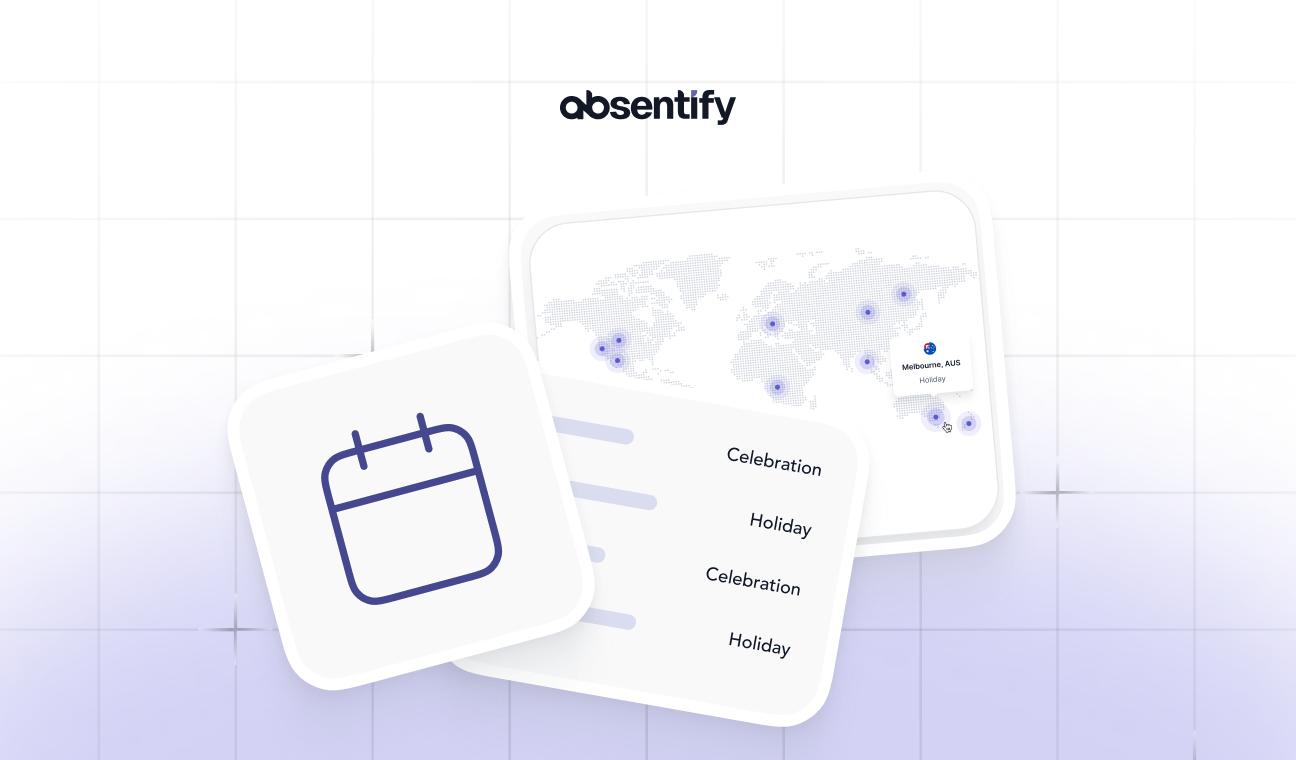
Best Practices for Relaxed Vacation Planning for Businesses
To make your daily practice easier, you should keep a few more small tricks in mind.
Establish common rules
A common set of rules creates an objective and fair cooperation – this applies to sports as well as in business. The planning of vacations is no exception to this. These rules bring more calmness into the planning:
- When can vacation requests be submitted? (For example, from the end of October for the following year)
- By when should remaining vacation days be taken?
- How is it decided if two people want the same date?
- What system is there to ensure that everyone gets a turn at coveted appointments (such as bridge days)?
- What are the steps requiring authorization? (Signature, email approval, etc.)
Distribute bridge days strategically
Bridge days around public holidays are in high demand. Try to distribute these days fairly. Some companies use a rotation system to make it fair. Others decide that no one is allowed to block the same coveted date two years in a row.
Keep vacation requests as simple as possible
Applying for vacation should not be a major administrative act. Offer your team an easy and accessible way to enter their vacation plans and coordinate with each other in advance. As a rule, many already know which colleagues they cannot be absent simultaneously with.
Organize fair representation solutions
Not every function can be covered by every colleague. Therefore, make sure that areas of responsibility are documented and that at least one person on the team knows how to react in case of an emergency. Anyone working within a department should coordinate in advance if an extended vacation is planned.
Vacation planning software: Which one fits your team?
A vacation plan on paper that moves from desk to desk should ideally not be the standard for vacation planning in any company. Below we will show some of the most common methods along with their respective strengths and weaknesses.
Vacation Planning Outlook
Those who work a lot with Microsoft 365 surely also use Outlook. The mailbox is practically always open, so it makes sense to use Outlook's calendar features for vacation planning within the company.
Advantages:
- Low barrier: In many companies, Outlook is already in use, so there are no additional licensing fees.
- Simple integration: New appointments can be set up immediately, and it's easy to see who is in the office when.
Tip: If you opt for vacation planning with Outlook, having a separate calendar structure can be beneficial. This means creating a special group or department calendar for absences, rather than cramming everything into your personal calendar.
Vacation planning in Outlook with additional features.
You can integrate absentify for free into Outlook and Teams. After just a few clicks, the tool becomes indistinguishable from the familiar user interface, adding numerous functions to the well-known calendar.
Advantages:
- real approval function for vacations and other absences
- divide the colleagues into departments and set absence quotas
- set minimum staffing levels for the departments
- Vacation days and remaining vacation are calculated automatically
You don't know absentify for Microsoft yet? Simplify your vacation planning now: in Microsoft 365, Outlook, and Teams – fully integrated and free!
Vacation planning for companies using Excel
A vacation list in Excel has been a classic for decades, but it's practically as prone to errors as a paper calendar.
Advantages:
- Immediately available: Almost everyone is familiar with Excel or a similar spreadsheet program.
- Customizable: You can design your own tables, incorporate color markings, and use formulas to calculate vacation balances.
Disadvantages:
- High maintenance effort: When many people access the same file, versioning and editing conflicts can occur.
- Oversight suffers with large teams: As the number of employees increases, the table becomes longer and more cluttered.
In conclusion: Using Excel for company vacation planning is an option when the team is relatively small. As soon as you want to map out more complex structures, you should consider a better alternative.
Online vacation planner
There are some online tools available that you and your team can use to plan and schedule your vacation together.
Advantages:
- Access from anywhere: Employees can also request vacation from home.
Disadvantages:
- Costs: For larger teams, monthly or annual fees apply, which vary depending on the range of functions.
- Away from the workflow: An additional tool that your team has to seek out separately can feel like a foreign body or an extra burden.
Complete holiday calendar without leaving Microsoft Outlook

The vacation and absence management tool absentify can integrate your entire team for free into Microsoft365. This way, everyone can see each other's vacation times and add their own entries without having to leave Outlook or Teams.
Absentify also offers many features that turn vacation entries into a clear plan for each team member:
Define types of absences
Create a list of all conceivable types of absence: vacation, sabbatical, further education, maternity leave, parental leave, etc.
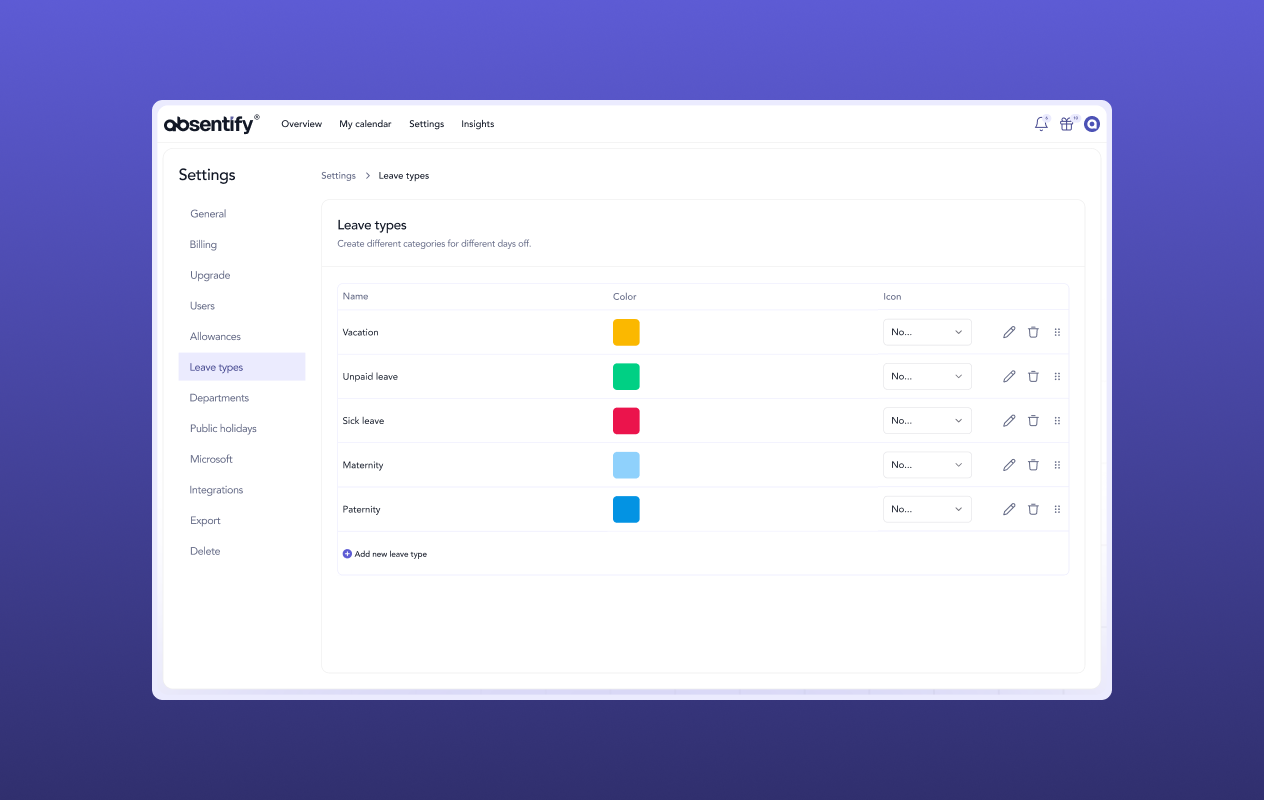
Absence quotas within your teams
Determine the maximum number of colleagues that can be on vacation at the same time and approve absences first. Divide your team into different departments, set minimum staffing levels, and receive alerts for overlaps.
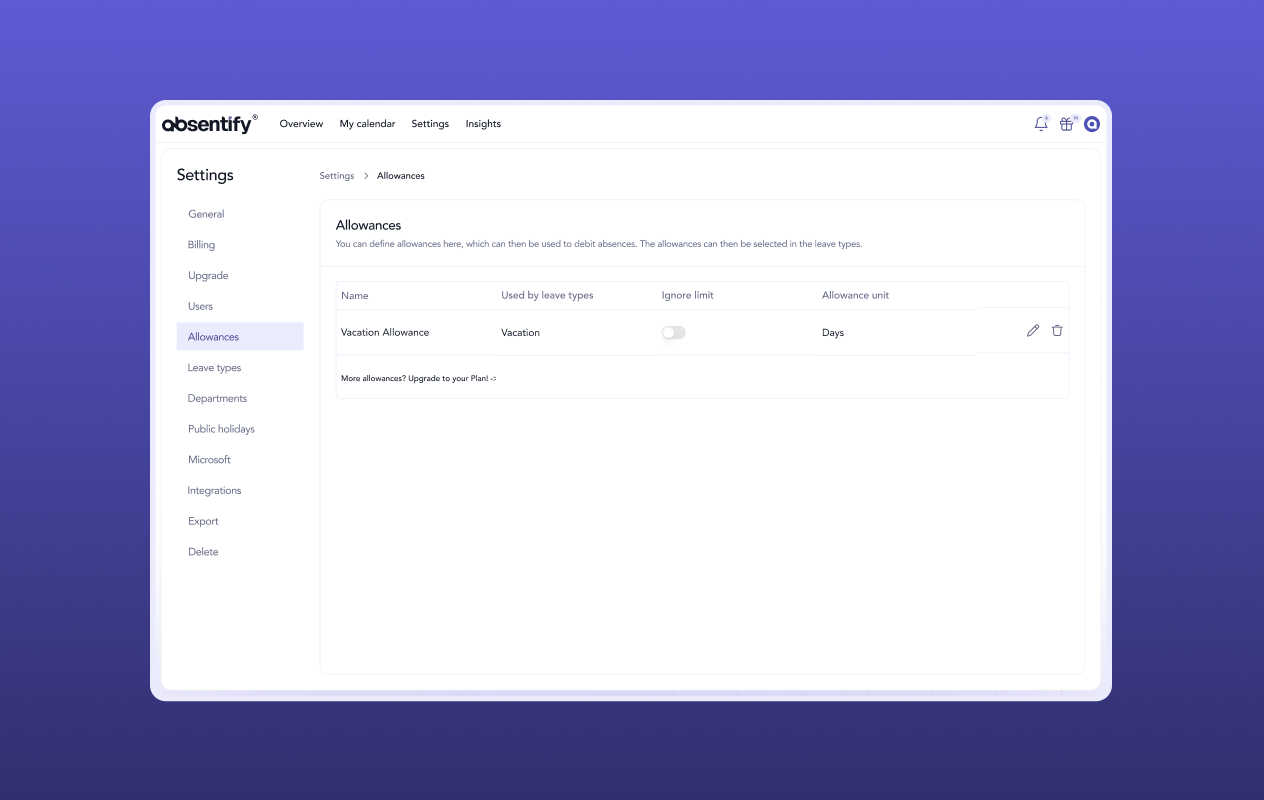
Set working hours
Create individual work schedules for each team member that are visible in both personal and team calendars.
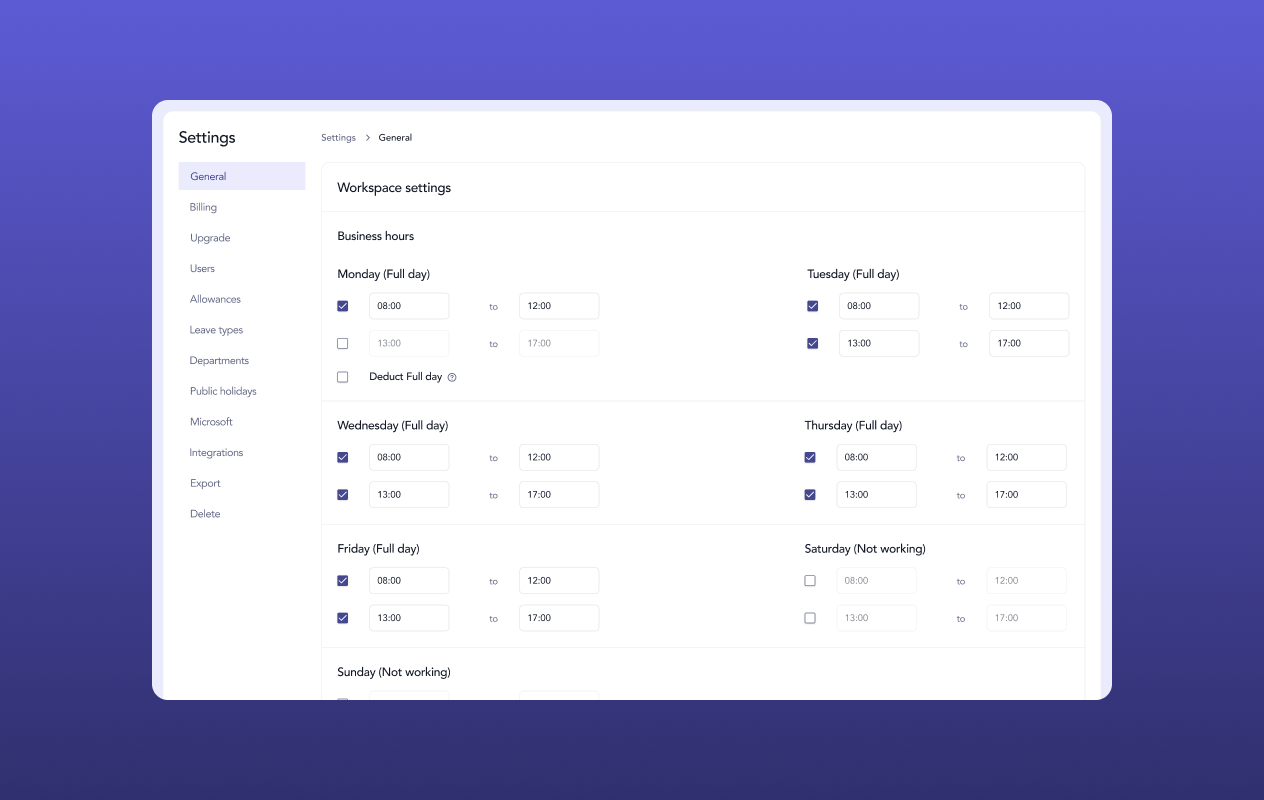
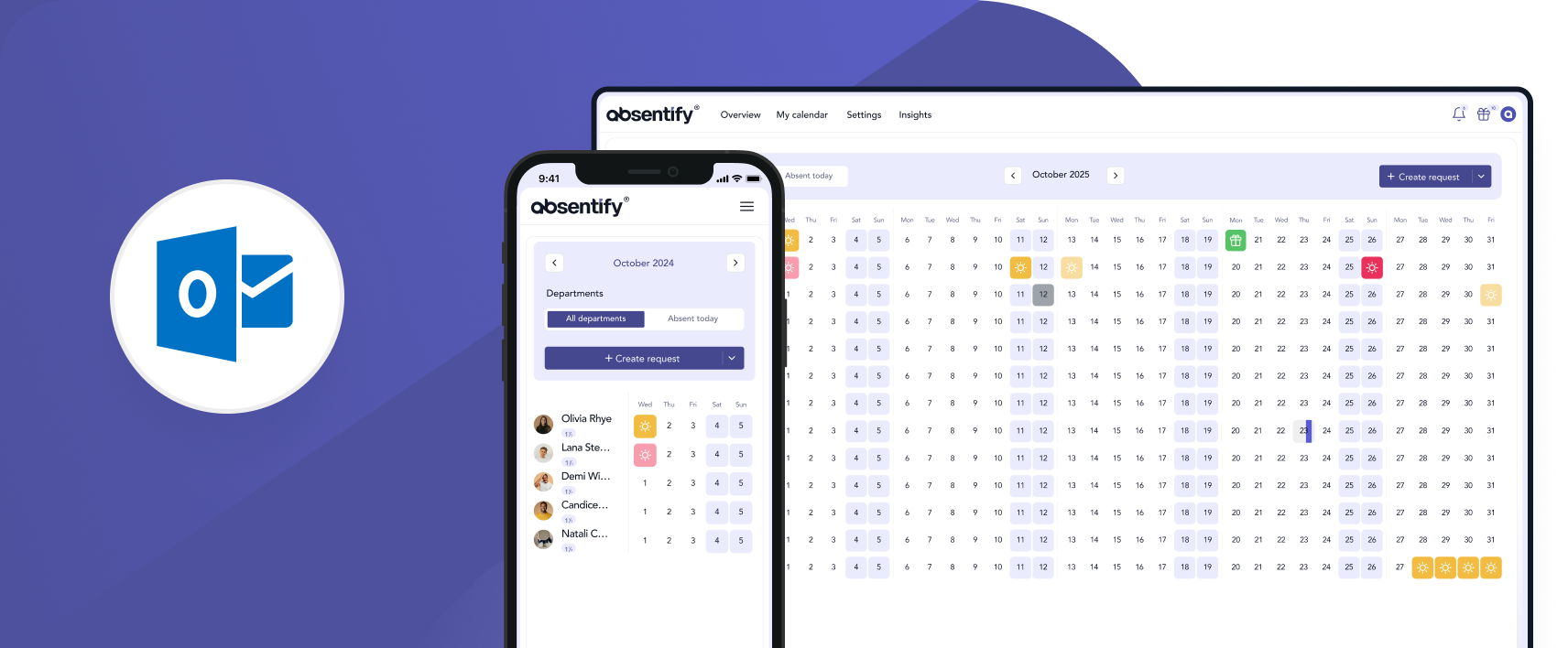
Manage absences directly in your Outlook interface, available on desktop and mobile devices. Switching between different apps is no longer necessary.
Vacation Planning – Frequently Asked Questions and Answers
Why is vacation planning important in a company?

Structured vacation planning ensures that business operations are not disrupted and that colleagues have fair chances for desired vacation times.
How early should one start planning for next year's vacation?

Ideally, vacation planning for the coming year should start in the last quarter of the previous year to ensure enough lead time for all involved.
How can one avoid too many requests for specific vacation times?

By establishing fair rules, inquiring about vacation requests early on, and using software with real-time overviews, it can be prevented that too many colleagues apply for vacation during the same period.
What to do when several employees apply for vacation at the same time?

Many companies utilize the principle of fairness, for example, through a rotation system or prioritization based on tenure or social criteria.
Who is responsible for vacation planning in the company?

Responsibility typically falls to the human resources department or direct supervisors. It is advisable to establish clear processes for approval.
Would you like to simplify your absence management?
Find out how absentify can optimize your HR processes, save you time, and reduce errors. Easily manage employee absences in Microsoft Teams, Outlook, and SharePoint.
Start now for free